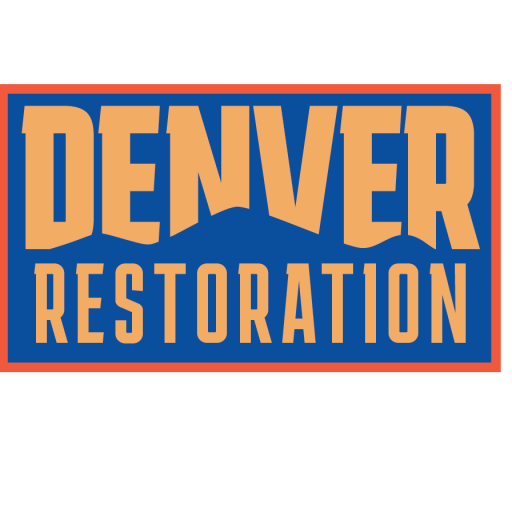Understanding Asbestos and Its Health Implications
If you’re a homeowner, property owner, or business owner, chances are you’re already aware of the potential risks associated with asbestos. To the untrained eye, asbestos may seem harmless. However, when disturbed, this material can release harmful dust particles into the air, leading to serious health implications. The particles can cause illnesses like asbestosis, lung cancer, and mesothelioma, diseases primarily affecting the lungs and respiratory system. For this reason, OSHA regulations insist on proper handling and disposal of asbestos materials during renovations and demolitions.
Ensuring Asbestos Safety: A Top Priority
Asbestos safety is a critical component of any disaster recovery or restoration process. This involves applying certain techniques and strategies designed to minimize exposure to harmful asbestos fibers. Understanding hygienic asbestos removal can provide you with the knowledge you need to protect yourself and others from potential health risks. Critical safety measures need to be implemented during the course of the removal, and additional precautions must be taken to prevent potential asbestos exposure after the process.
Hygienic Asbestos Removal: A Comprehensive Approach
Effective and hygienic asbestos removal is not just about the removal process. It also involves measures taken before and after the removal to ensure the safety of all individuals involved. This includes establishing a containment area, using approved and suitable protective gear, and employing highly efficient filtration systems.
Here are some essential tips to help ensure a hygienic asbestos removal process:
- Professional Assessment: The first step in hygienic asbestos removal is to conduct a professional assessment of the property. This identifies the presence, location, and extent of the asbestos contamination. Our team at Denver Restoration offers in-depth assessments to ensure a safe and effective removal process.
- Proper Protective Gear: Ensure all individuals involved in the removal process are outfitted in appropriate protective gear, including masks, gloves, safety glasses, and full body suits.
- Minimize Dust: It is imperative to keep the asbestos materials wet during the removal process, as this reduces the chance of dust particles being released into the air.
- Safe Disposal: Always follow local laws and guidelines for the disposal of asbestos-containing materials. Improper disposal can lead to further contamination.
Post-Removal Asbestos Safety Measures
Once the removal process is complete, it’s essential to continue maintaining safety and hygiene measures. This includes thoroughly cleaning the area to eliminate any residual asbestos fibers and conducting air monitoring to ensure the space is safe for occupation.
Our team at Denver Restoration specialize in post-removal clean-ups ensuring a hygienic and safe environment.
Stay Informed, Stay Safe
While this guide is designed to provide you with a general understanding of hygienic asbestos removal and the associated health risks, it is by no means exhaustive. We strongly recommend consulting with professionals in the field to ensure complete safety throughout the removal process. You can also check out the Asbestos FAQ from the New Jersey Department of Health for more detailed information.
Our commitment at Denver Restoration is to ensure our clients are equipped with the right information and support needed for successful restoration and recovery. Rest assured that with us, you’re not just getting a service provider, but a trusted ally committed to your safety and well-being.
The Legal Aspect of Asbestos Management
In addition to the practical aspects of asbestos management, knowledge of the relevant legislation on asbestos removal and disposal is imperative. Various federal and state laws oversee the handling, removal, and disposal of asbestos to ensure safety and to protect public health.
The Clean Air Act and the National Emission Standards for Hazardous Air Pollutants (NESHAP) govern the process of demolitions and renovations of structures containing asbestos. They set limits on the release of asbestos fibers during activities that may disturb asbestos-containing materials. In addition to federal regulations, individual states also have their own laws regarding asbestos removal, disposal, and inspection.
Asbestos Management Plan: A Proactive Move
Creating an effective Asbestos Management Plan (AMP) is a proactive measure to safeguard the health of occupants and ensure regulatory compliance. The AMP outlines the steps to be taken to manage asbestos in a building. It serves as a reference guide for property owners, facility management, and workers.
The AMP should include:
- Asbestos Inventory: A document that logs the locations and conditions of asbestos-containing materials (ACMs).
- Inspection Reports: Details of periodic inspections, which should be conducted regularly to monitor the condition of ACMs.
- Action Plan: An outlining strategy for managing identified ACMs, either via abatement (removal), encapsulation, or enclosure.
- Emergency Procedures: A step-by-step action plan for situations where ACMs may have been disturbed or damaged.
- Training Programs: Information about training requirements for staff and contractors who may come into contact with ACMs.
Tackling Lead Contamination Along with Asbestos
When dealing with older properties, it’s not uncommon to encounter lead contamination alongside asbestos. Like asbestos, lead presents a serious health risk, particularly to children. It’s often found in the old paint and can leech into water supplies through aged pipes.
We at Denver Restoration possess a deep understanding of lead contamination and the necessary abatement procedures. We ensure that your property is free from both lead and asbestos hazards, offering a holistic restoration service.
Considering Asbestos Related Insurance Claims
Understandably, dealing with asbestos can also have a financial impact. Many property owners may find support in their insurance policies for asbestos-related claims. However, navigating insurance claims for asbestos can be a daunting task, given the complexities involved.
We’ve gained a deep understanding of the claims process and built strong relationships with multiple insurance companies over the years. This puts us in a unique position to guide you through your asbestos-related insurance claims, ensuring a smooth and hassle-free process.
Educate and Empower: Knowledge Transfer
A critical part of our mission at Denver Restoration is to empower our clients with information to make informed decisions. Education is a fundamental part of our approach. In addition to our expert restoration services, we also engage in knowledge transfer about asbestos, its dangers and safe removal practices.
We believe in empowering communities to recognize and deal effectively with asbestos. We strive to keep you updated with the latest information and safety practices on asbestos removal.
Asbestos Management as a Continuous Effort
Asbestos management is more than a one-time effort; it’s a continuous process. Once asbestos is identified in a property, it requires ongoing monitoring and maintenance to ensure it remains sealed and does not pose a risk to occupants’ health. After removal, it’s crucial to conduct regular inspections to ensure no residual asbestos fibers remain. This takes diligence, commitment, and expertise.
At Denver Restoration, our commitment to health and safety extends beyond the immediate asbestos removal. We provide long-term support, offering guidance and inspections to ensure your environment remains safe and healthy.
Our dedication to professional, holistic, and safe asbestos management makes us a trusted partner in your health safety efforts.

